PROGRAM SCHEDULE 2003-2004
17th Season
| Sun | Sep | 14 | 2:00 | On Period Instruments: Celebrating Tafelmusik playing Beethoven Symphonies.
In the last two decades the symphonies of Beethoven have gained colourful expressions – rather like Andy Warhol's series of portrait prints of the composer, which were published in 1987, the year of Warhol's death. It is quite symbolic that in that same year conductors of period-instrument orchestras, such as Roy Goodman, Christopher Hogwood, Sir Roger Norrington, and Frans Brüggen, were in the midst of making their own individual and highly colourful portraits of Beethoven – recordings of complete cycles of the symphonies. 
Some of you may remember the shock you experienced back in the 1980s at your first encounter with those so-called “authentic instrument” recordings. How eye-opening it all was! Textures were so much lighter but also rugged and those faster tempi just blew us away. The expressive and revolutionary nature of Beethoven's creation seemed to have received a contemporary understanding, as if the masterpieces were given re-birth. It had far more immediate significance to 20th-century listeners than being just a historical reconstruction, as if for some kind of sound museum. While hearing Beethoven on period instruments cannot be a novelty anymore, the discoveries of these period-instrument performers have been rapidly absorbed and developed further by modern-instrument orchestras. Since the 1990s (from Nikolaus Harnoncourt to Sir Simon Rattle) so-called Historically Informed Performance (HIP) has been growing in the mainstream. Regular orchestras with modern instruments have been performing and recording Beethoven symphonies based on the fresh information and knowledge which historians and musicologists revealed for the first time at the tail end of the 20th century. But all this started from these period-instrument recordings of the Beethoven symphonies in the 1980s. Now that we are at an appropriate distance from those days, we can taste and evaluate each recording more precisely. What a variety of approaches and different kinds of sound they provide for us! Probably it is a good time to examine the musical achievement in these Beethoven recordings from two decades ago. For those of us in Toronto this also means something even more exciting. Tafelmusik's October 2003 concerts will mark the absolute premiere of Symphony Nos. 5 & 6 on period instruments in Toronto. The chance to listen to Beethoven in live performances on period instruments is extremely rare anywhere on the globe. We are so very lucky! Let's be well prepared together for this historical LIVE occasion! [Discography]
Thurs - Sat, Oct 2 - 4, 2003 at 8:00pm Tafelmusik presents Toronto's first period-instrument performances of Beethoven's great masterpieces: the revolutionary Symphony No. 5 and the Pastoral Symphony No. 6. Performed in the intimate concert space at Trinity-St. Paul's Centre, and on the period instruments, these great works will astonish you with their immediacy and power. You will truly hear this music as if for the first time - a concert experience not to be missed. Directed by renowned German conductor Bruno Weil on The New Bärenreiter Urtext Edition. (ta/ta) | |
| Wed | Oct | 1 | 7:00 | Horowitz's 100th Birthday - "BYOH"
BYOH (Bring Your Own Horowitz Recording)… if you have one. Please bring your favorite CD of Horowitz from your collection or be an innocent and pure member of a selection jury (it is not your duty to bring a recording either.) Including Video & DVD presentations
Wednesday, October 1st, 2003 marks the 100th anniversary of the birth of an artist generally considered to be one of the greatest pianists of the 20th century. In celebration of this historic event, the Classical Music Club Toronto returns to a format we haven't enjoyed for some time - "Bring Your Own". We ask all members to bring a CD of Horowitz performing and to select a short excerpt (approximately 10 minutes) to share with the other members. Remember, even if you don't bring a CD, you can still participate. Perhaps you were fortunate enough to have enjoyed a live performance and would like to share that memory. Or, you can simply join in the general conversation and appreciation which we hope will result in our re-visiting the exciting performances by this master of the keyboard. Come join the celebration! [Short biography of Horowitz by Sony Classical] [Gallery of pictures of Horowitz] (dh/py) | |
| Sun | Oct | 19 | 2:00 | Shostakovich: From smile to sneer

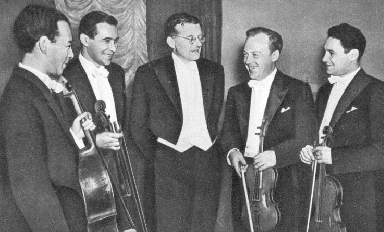
Musical humour is one of the most recognizable characteristics of Shostakovich's style; there is hardly any work by him that doesn't have at least one humorous passage. Sometimes the humour is "programmatic", as in the music he wrote for theatre, ballet, and film, when the music illustrates a scripted humorous situation. But, most of his musical humour is much deeper and subtler, and it is an expression not of external situation, but rather of inner feelings and emotions. In early works the humour is that of good cheer and radiates a good natured, if somewhat mischievous, sense of fun. Later on, however, as his work came under increased criticism from Soviet authorities, and he was forced to write music that would conform to the dogmas of "socialist realism", humour becomes his form of protest and rebellion. It becomes much darker and grotesque, and one can often see - or, rather, hear - a good natured smile turning into a sarcastic, savage - often frightening - sneer.
(jn/jn) | |
| Sun | Nov | 9 | 2:00 | Sergey Prokofiev (1891-1953)
On the 50th anniversary of the composer's death, we will listen to a variety of works for orchestra, for piano, and for ballet.
A video of the rehearsal and performance of Symphony No. 1, "The Classical Symphony" conducted by Celibidache, will begin the programme which also includes Piano Concerto No. 2, music from Alexander Nevsky, excerpts from Romeo and Juliet and Symphony No 5.
(ta/ta) | |
| Fri | Nov | 28 | 7:00 | Symphonie Fantastique
| |
| Sat | Dec | 13 | 7:00 | Christmas Party
BYOF: Potluck Party.
The kitchen is open to receive and prepare food from 6:30 P.M. and the party starts at 7:00 P.M. (mf/mh) | |
| Fri | Dec | 26 | 1:00 | Boxing Day Get-together and The Hard Nut
Please note: The Leftover Potluck starts at 11:30 A.M. The video presentation of The Hard Nut starts at 1:00 P.M. 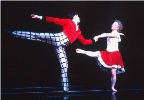
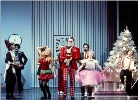
An anonymous reviewer on Amazon writes this of The Hard Nut: There are male snowflakes and in the waltz of the flowers--no problem--until we see them dancing in tutus like the women! Nothing like chest hair coming out of a tutu bodice! Marie's Mom is suspiciously a guy in drag as well. Too adult and morally compromised for my standards. Not for kids, not for adults either in my opinion. Not for kids, maybe, but quite likely it's for US! [Link to Amazon web page for all the reviews.] [Link to Mark Morris Dance Group.] 
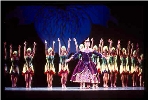
[Full-size images from The Hard Nut ] (/ta) | |
| Sun | Jan | 4 | 2:00 | Turandot DVD presentation
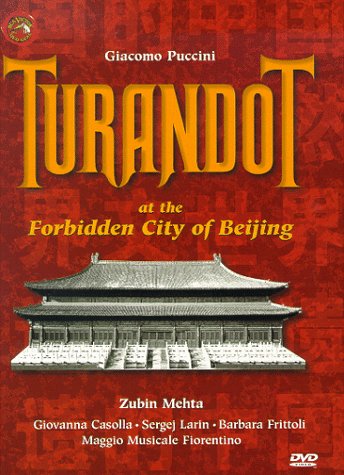



Celebrate the New Year with the Princess Turandot in Beijing ... and Salzburg! This is your chance to compare two recent (and very different!) productions of Puccini's final operatic masterpiece. The Salzburg 2002 production, staged by David Pountney and conducted by Valery Gergiev, provides an alternative to the traditional approach. From the huge stage of the Grosses Festspielhaus, this performance will be both surprising and intellectually stimulating. [Reviews of the Salzburg DVD performance.] From the Forbidden City in Beijing, staged by filmmaker Zhang Yimou and conducted by Zubin Mehta, this 1997 production is spectacle and grandeur at its most opulent. Featuring a huge chorus and many non-singing participants, the tale of the dangerous princess and her ardent lover is told with sweeping gestures. Presented outdoors before an audience of over 4,000 people, the setting is magnificently complemented by real historical palace buildings and traditional Chinese costumes. [Reviews of the Beijing DVD performance.] (kw/coc) | |
| Sat | Feb | 14 | 7:00 | Günter Wand Anniversary
At the very beginning of Bruckner's Symphony No. 4 it used to always be said that listeners envisioned a vast German forest. The images of a traditional Europe were evident to them. But now in the opening years of the 21st century we may be able to imagine something more universal beyond the borders of Europe, perhaps the beauty without the local colour. Listen to the opening horn solo as it leads into the translucent veil of sound spread out by the strings. Can this now also not be the serenity of the Rocky Mountains or the mystic beauty of the holy mountains of Tibet? The Bruckner symphonies have definitely been considered the core of the orchestral repertoire, or the ultimate goal for conductors in their artistic careers. But, in fact, those enormous compositions scared off a significant number of ordinary but naive music lovers (myself included). So many people still suffered from the negative image of Bruckner symphonies as being obstinate, incomprehensible ... maybe even deep, but so tiring. 
I feel personal gratitude for the Bruckner recordings by the late Günter Wand (1912-2002). It was almost as if a youthful body suddenly revealed itself from within ancient armour which suddenly cracked in half. Under the baton of Wand this music is serene and pure, but at the same time so humanly warm. Amazing craftsmanship and penetrating insight into the score are evident in Wand's interpretation, but his analysis never falls into sterile mathematics. They say that Wand achieved his profound maturity after he turned eighty. Wand's way of constructing soaring sound-cathedrals stretches my emotions and logic to their limits while keeping a warmth and organic humanity. It is neither foreign nor intimidating, but is so intimate that I feel embraced by it. Do not be silly and spend the evening of St. Valentine's Day alone. On this day of love we will get together to listen to Symphony No. 4 to which Bruckner himself gave the title "Romantic." I am planning to play nothing but the recording with the Berlin Philharmonic, recorded live in 1998, and we will have the opportunity to experience the entire piece without interruption or cuts. Have no fear, this will be no annoying lengthy work; it is just as long as Beethoven's Symphony No. 9, about 66 minutes. Let's commemorate the 180th anniversary of Anton Bruckner's birth (1824) as well as celebrate the life of the late Günter Wand who passed away on February 14th, 2002. And what will YOU see? Maybe snow-covered mountains? (ta/ta) [Discography] | |
| Sun | Feb | 29 | 2:00 | The Mermaid: Haydn to Zemlinsky
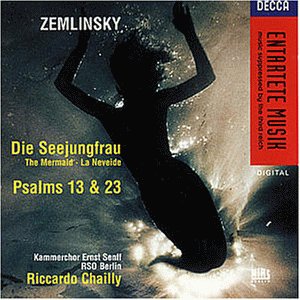
Throughout the ages myths and stories of sea-dwelling, half-human creatures have exerted a strong influence on the creative imagination. From the beautiful but deadly Sirens in Homer's Odyssey to the tales brought back by sailors from long voyages, the fascinating creatures are well-represented in literature, the visual arts, and music of several centuries. Even on land, the waterfalls, brooks, and pools of the Romantic European forests were thought to be home to nixies, loreleis, and other sisters of the sea-going species. While almost from the beginning considered as a symbol of transformation and the deep secrets of the sea, the mermaid in more recent times has come to be a sexually-charged image representing freedom and sensuousness. One of the most important story-tellers to deal with this legendary creature is Hans Christian Andersen (1805-75). "The Little Mermaid" (1837), along with many of his other works, marks a dividing line in the treatment of fairy-tale characters. Sophisticated feelings of love, loss, and sorrow are addressed as never before in the genre of the European tale. Previously the tales described a mature, sensual figure, luring men to their doom. With Andersen, the mermaid is now shown as an innocent, fun-loving, laughing being who suffers from unrequited love for a land-bound prince. Suddenly we are made to feel compassion for this poor soul who, no longer an instrument of destruction, is herself a suffering victim. This programme will explore the story of the mermaid through song and orchestral music with examples taken from the works of such composers as Haydn, Wagner, and Debussy. The program will conclude with a complete performance of Alexander Zemlinsky's tone poem Die Seejungfrau (1902-3), based directly on Andersen's tale. On a personal note, I discovered this work during the past year and was enthusiastically moved to acquire several recordings as well as build a program around it to share with the members of the Club. (js/ta) | |
| Sun | Mar | 14 | 2:00 | Wagner: Wesendonk Lieder & Siegfried Idyll

It is often said that composers are separate from their music. An individual's life is not necessarily identical to that same individual's creations. In the case of Richard Wagner, there is a strong argument that his life and his works are bound together more strongly than with other composers. Indeed, Wagner is one of the few composers to have written an autobiography, Mein Leben. Richard Wagner had two major adulterous love relationships in his life, both of which directly produced two of his most original creations — the Wesendonk Lieder (1857-8 — one of his few compositions in the Lieder form) and the Siegfried Idyll (1870). In turn, these two works found a place in two of Wagner's masterworks &mdash Tristan und Isolde and Siegfried, respectively. The first one was with Mathilde Wesendonk, poet, the wife of a wealthy silk-trading businessman in Zürich, Switzerland. While her husband became the patron for the exiled Wagner, she herself became Wagner's spiritual and emotional supporter as well as a partner with full philosophical understanding of his art. Most fruitfully their intense relationship resulted in Tristan und Isolde, mirroring their impossible passion. After completing act 1 of the Musikdrama in 1857, five songs were composed by Wagner on a text written by Mathilde, known as Wesendonk Lieder, of which two songs were subtitled "Study for Tristan und Isolde." In the third song, "Im Treibhaus" ("In the Greenhouse"), the same repeating accompaniment as the opening of act 3 can be heard. The main theme of act 2 love duett appears in "Träume" ("Dreams"), the fifth song. Wagner's original composition was for piano and voice, but later in the 1880s Felix Mottl wrote an orchestral version, which is more commonly performed nowadays. At Tribschen, Wagner's residence near Lucerne, the end of his second adultery is about to be celebrated. Cosima, ex-wife of famous conductor Hans von Bulow is about to receive a surprise musical gift. On the morning of Sunday, December 25th, 1870, Cosima woke up with the sound of live music played by 15 musicians on the staircase. It was a present from Richard for Cosima's upcoming 33rd birthday. The piece was repeatedly performed on that day and made her so exceedingly happy that she exclaimed "Now, let me die!" To his at-last-officially-registered wife Richard replied "It would be easier to die for me than to live for me." Although Cosima wanted to keep the Tribschen Idyll private, financial difficulties forced the Wagners to give up the Idyll which was sold to a publisher on November 9, 1877 and re-named Siegfried Idyll. "The Idyll is sent off today; the secret treasure is to become public property — may the pleasure others take in it match the sacrifice I am making!" The main themes from the Idyll were shared in Siegfried, the second night of The Ring Cycle, and the Idyll itself became a major piece in the orchestral repertoire, both in the original 16-instrument arrangement and in larger orchestrations. Yes, Frau Wagner, your sacrifice was well worth it and we feel grateful to you! Our program will start from the originals: the piano accompaniment version of Wesendonk Lieder and the 16-instrument version of the Siegfried Idyll. Also, we will move from the original versions through scenes from Wagner's stage works in which the influence from these two pieces is evident, to finally arrive at the large orchestral arrangements. (mf/ta) | |
| Sun | Mar | 28 | 2:00 | Beethoven: Violin Concerto

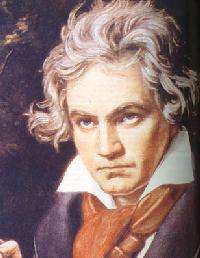
Beethoven's concerto for violin and orchestra is one of the most popular works not only of the violin repertoire, but also of the genre in general, and as such it has been recorded by all great (and even not so great) violinists, some of them more than once. In its perfectly balanced structure and proportions it is a textbook example of the classical concerto form, and at the same time its depth of feeling ushers in the romantic period. Its challenges are many and tremendous, both from a technical and musical point of view. Chiefly among them is the need to blend its rich, warm lyricism with the near perfection of its classical form, to highlight the details without losing the sense of the whole, and to preserve the sense of olympian balance. While an exhaustive review of all the recordings is impossible (with the discography running into the tens), I will present how various violinists approach this concerto's various aspects and unique challenges. (jn/bs) | |
| Sun | Apr | 25 | 2:00 | The Classical Style: Haydn·Mozart·Beethoven, based on Charles Rosen's book
The classical style stems from galant music. It borrowed its simplicity, its symmetry, and its easy tunefulness. What it gave to it - despite, or rather because of, its symmetry - is drama. It soon learnt how to take simple musical ideas and exploit them thoroughly, while increasing the tension before - let's not forget the importance of symmetry - going back to its earlier more stable position. In other words, it is both a directional and symmetrical language. The classical style soon grew in complexity, breadth, and refinement, and re-integrated elements of the baroque style (the fugue). Haydn, Mozart, and Beethoven produced the string quartets, piano sonatas, and symphonies that made them famous. However, it has been noticed that history repeats itself ... In 1823, Beethoven was writing his complex Diabelli Variations while the Young Turks of composition were drawing their inspiration from virtuosi, salon music, German folk songs, and Italian opera. The time of Romanticism had come. (ll/ka) | |
| Sun | May | 30 | 2:00 | Ralph Vaughan Williams: Symphony No. 6 in E Minor (1944-7, revised 1950)
Considered one of the first major works of Ralph Vaughan Williams' final period of musical creativity, much controversy has been aroused over the meaning of the Sixth Symphony.
To complement a complete performance of this important work, a selection of music from Vaughan Williams' final period will be presented which reflects the influence this symphony had on his own creative output. (js/ta) | |
| Fri | Jun | 11 | 7:00 | R. Strauss: Birthday Celebration - Ein Heldenleben etc.
It is the 140th birthday celebration of Richard Strauss. For the occasion Classical Music Club Toronto selects one of the most ravishing orchestral pieces by this composer and the current leading interpreter to match it. Ein Heldenleben, or A Hero's Life, with the Vienna Philharmonic conducted by Christian Thielemann, a live recording from the Musikvereinsaal in September 2002. (DGCD 474 192-2) 
Unlike his rivals on the international concert scene, Thielemann has built his career through several major opera houses. The Staatstheater in Nürnberg, the Staatsoper in Hamburg, and the Deutsche Oper Berlin have all been home to this exciting new conductor. Thielemann made his Metropolitan Opera debut in 1991 and Bayreuth Festival debut in 2000 where he is scheduled to conduct the Ring Cycle in 2006. His sensitivity to the dramaturgy in music has been mentioned often in describing his characteristics as an opera-raised conductor. His insight assures the continuity even in a lengthy piece such as Ein Heldenleben. Another never-ending dream, Tristan und Isolde, was recorded live under Thielemann in May 2002 by DG and will be released in May 2004. Reviewers raved about the performance calling it the best since those of Carlos Kleiber or Karl Böhm. But on the concert scene as well Maestro Thielemann has been much talked-about. His Viennese appearances are almost always like a favourite gladiator's entrance into the Roman Colosseum. In mid-November 2003 Christian Thielemann/Vienna Philharmonic and Franz Welser-Möst/Cleveland Orchestra appeared in the musical capital only two days apart and both performed Beethoven's Pastoral Symphony. On September 15th, 2002 Simon Rattle appeared in the Musikvereinsaal with Berlin Philharmonic. The recording of Ein Heldenleben by Thielemann you are going to hear is from the concert held in the same hall just one day before, September 14th, which opened the 2002-2003 concert season. Let's hear the real sparkle of the competing energy in the music. The CMC meeting will open with R. Strauss' Cello Sonata by Toronto resident, Shauna Rolston, whom I call Canadian Cat Woman. (ta/ta) | |
| Sat | Jul | 10 | 7:00 | BYOR: Glinka and Dvorák - Chamber Music
Antonín Dvorák is one of these composers whose works seem to produce a feeling of homecoming. Even listeners who are not of Czech or Bohemian background recognize a warm, nostalgic welcome in the music. There are even those who detect an "American" influence which recalls the simple beauty of American folk songs.
In a double commemoration for 2004 (Glinka was born in 1804; Dvorák died in 1904) let's discover together what creates this appeal. For the July 10th programme, we invite you to bring along your favourite recording of the chamber music of Dvorák or Glinka. This is a wonderful opportunity to share the appeal of this charming music with other Club members. (*/ta) | |
| Sat | Jul | 24 | 7:00 | Schoenberg: Transfigured Sextet
Schoenberg wrote the following about his "Transfigured Night": CMC's recognition of the 130th anniversary of the birth of Arnold Schoenberg will open with his revised orchestral version of Transfigured Night, followed by the original chamber music version of 1899. (ta/ta) | |
| Sat | Aug | 7 | 7:00 | Light music program
(bc/bs) [Discography] | |
| Sat | Aug | 21 | 7:00 | Off the Beaten Path: ABCD
(ge/ta) |

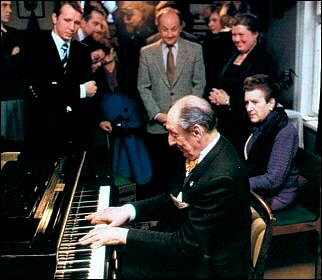

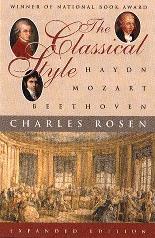
 One critic called it a war symphony and likened the quiet Epilogue to the vision of a world laid waste by atomic warfare. This follows from an interpretation of the Fourth Symphony (1931-34) as a prophecy of World War II and the Fifth (1938-43) as the vision of peace.
Others have thought the violent and jazzy Scherzo was inspired by a tragic incident during the bombing of London. Vaughan Williams emphatically denied all this but did refer to the Symphony's Epilogue movement with Prospero's words from The Tempest: "We are such stuff as dreams are made on, and our little life is rounded with a sleep."
One critic called it a war symphony and likened the quiet Epilogue to the vision of a world laid waste by atomic warfare. This follows from an interpretation of the Fourth Symphony (1931-34) as a prophecy of World War II and the Fifth (1938-43) as the vision of peace.
Others have thought the violent and jazzy Scherzo was inspired by a tragic incident during the bombing of London. Vaughan Williams emphatically denied all this but did refer to the Symphony's Epilogue movement with Prospero's words from The Tempest: "We are such stuff as dreams are made on, and our little life is rounded with a sleep."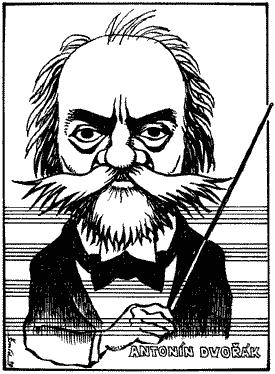 One of the outstanding features of late 19th century and early 20th
century music is the development of the so-called "nationalistic schools". Thanks to composers like Dvorák, Tchaikovsky, Janácek, Bartók, and others, the flavour of serious music began to be spiced with either direct quotation from ethnic music or with melodies and harmonies that recalled "folk music". For some, these imports appealed because of their exoticism. No one had heard such
music in the concert halls before. Others found the unusual too
uncomfortable and unwelcoming.
One of the outstanding features of late 19th century and early 20th
century music is the development of the so-called "nationalistic schools". Thanks to composers like Dvorák, Tchaikovsky, Janácek, Bartók, and others, the flavour of serious music began to be spiced with either direct quotation from ethnic music or with melodies and harmonies that recalled "folk music". For some, these imports appealed because of their exoticism. No one had heard such
music in the concert halls before. Others found the unusual too
uncomfortable and unwelcoming.
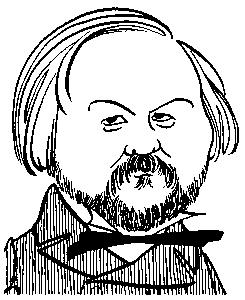 Like many Russian composers of his day, Mikhail Glinka also drew upon many sources to provide musical colour. For example, his opera Russlan and Ludmilla calls upon many non-Western musical traditions - Caucasian, Arabian, Persian, Finnish, Turkish, and Russian. Always this provides a glittering spectrum of tone colours and moods.
Like many Russian composers of his day, Mikhail Glinka also drew upon many sources to provide musical colour. For example, his opera Russlan and Ludmilla calls upon many non-Western musical traditions - Caucasian, Arabian, Persian, Finnish, Turkish, and Russian. Always this provides a glittering spectrum of tone colours and moods. Arnold Schoenberg (Sept. 13, 1874 - July 13, 1951).
Arnold Schoenberg (Sept. 13, 1874 - July 13, 1951).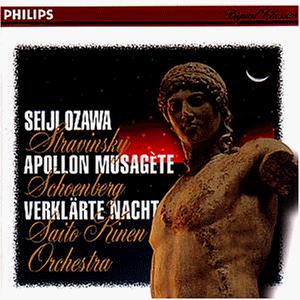 My composition was perhaps somewhat different from other illustrative compositions, firstly, by not being for orchestra but for a chamber group and secondly, because it does not illustrate any action of drama, but was restricted to portray nature and to express human feelings.
It seems that, due to this attitude, my composition has gained qualities which can also satisfy if one does not know what it illustrates, or in other words, it offers the possibility to be appreciated as 'pure' music. Thus it can perhaps make you forget the poem which many a person today might call rather repulsive. Nevertheless, much of the poem deserves appreciation because of its highly poetic presentation of emotions provoked by the beauty of nature, and for the distinguished moral attitude in dealing with a staggeringly difficult problem."
My composition was perhaps somewhat different from other illustrative compositions, firstly, by not being for orchestra but for a chamber group and secondly, because it does not illustrate any action of drama, but was restricted to portray nature and to express human feelings.
It seems that, due to this attitude, my composition has gained qualities which can also satisfy if one does not know what it illustrates, or in other words, it offers the possibility to be appreciated as 'pure' music. Thus it can perhaps make you forget the poem which many a person today might call rather repulsive. Nevertheless, much of the poem deserves appreciation because of its highly poetic presentation of emotions provoked by the beauty of nature, and for the distinguished moral attitude in dealing with a staggeringly difficult problem."

 It is time to relax. The weather is too hot to listen to anything really heavy. This is a great opportunity to listen to music that is lighter, without sacrificing quality of composition and performance. Like the kitty in the hammock, sit back, close your eyes and relax. You will hear music from the great composers as well as the lesser knowns. To wake you up, there will be a surprise at the end of each segment - but I cannot say much because that would spoil the surprise!
It is time to relax. The weather is too hot to listen to anything really heavy. This is a great opportunity to listen to music that is lighter, without sacrificing quality of composition and performance. Like the kitty in the hammock, sit back, close your eyes and relax. You will hear music from the great composers as well as the lesser knowns. To wake you up, there will be a surprise at the end of each segment - but I cannot say much because that would spoil the surprise! I'm also trying a new presentation approach. The music selections will be ripped from the original CDs, transferred from LPs or borrowed from the Internet, and be burned onto a pair of CDs for each part of the programme. I hope this will create less fuss of changing, dropping and losing CDs and cases and let us focus on the music.
I'm also trying a new presentation approach. The music selections will be ripped from the original CDs, transferred from LPs or borrowed from the Internet, and be burned onto a pair of CDs for each part of the programme. I hope this will create less fuss of changing, dropping and losing CDs and cases and let us focus on the music.
 Welcome to the first in our new alphabetical series, Off The Beaten Path, about the composers of hidden gems who deserve more recognition and admiration. Given these initials A, B, C and D, who do you think these composers possibly could be?
Welcome to the first in our new alphabetical series, Off The Beaten Path, about the composers of hidden gems who deserve more recognition and admiration. Given these initials A, B, C and D, who do you think these composers possibly could be?